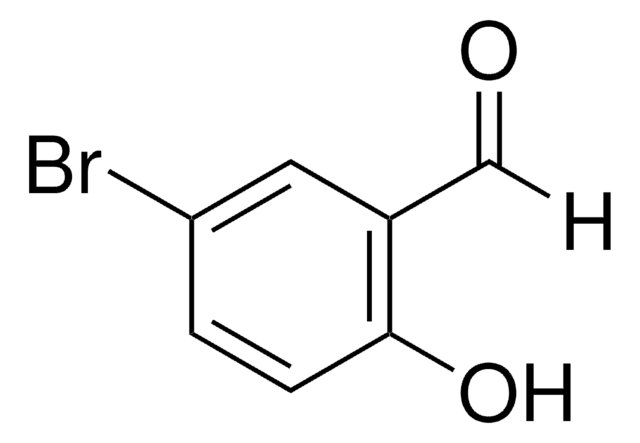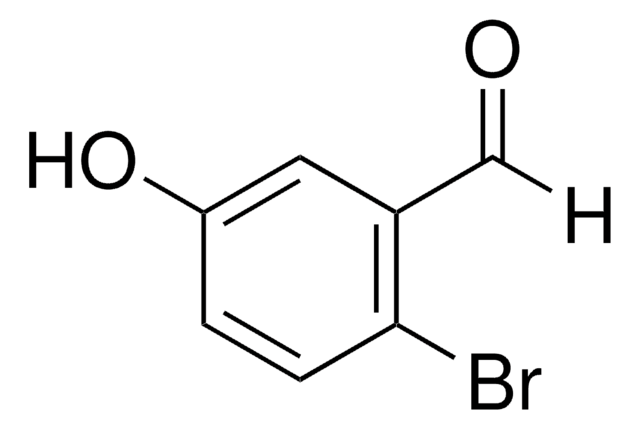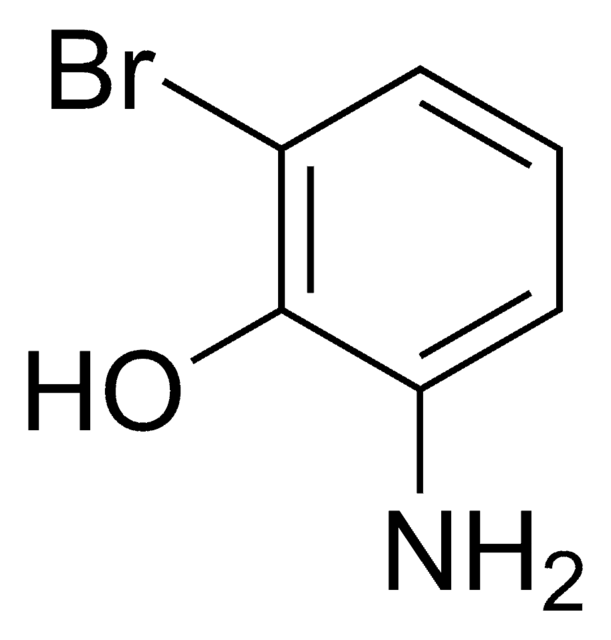All Photos(1)
About This Item
Linear Formula:
Br2C6H2(OH)CHO
CAS Number:
Molecular Weight:
279.91
EC Number:
MDL number:
UNSPSC Code:
12352100
PubChem Substance ID:
NACRES:
NA.22
Recommended Products
Assay
98%
mp
181-185 °C (lit.)
SMILES string
Oc1c(Br)cc(C=O)cc1Br
InChI
1S/C7H4Br2O2/c8-5-1-4(3-10)2-6(9)7(5)11/h1-3,11H
InChI key
SXRHGLQCOLNZPT-UHFFFAOYSA-N
Looking for similar products? Visit Product Comparison Guide
Related Categories
Signal Word
Warning
Hazard Statements
Precautionary Statements
Hazard Classifications
Eye Irrit. 2 - Skin Irrit. 2 - STOT SE 3
Target Organs
Respiratory system
Storage Class Code
11 - Combustible Solids
WGK
WGK 3
Flash Point(F)
Not applicable
Flash Point(C)
Not applicable
Personal Protective Equipment
dust mask type N95 (US), Eyeshields, Gloves
Certificates of Analysis (COA)
Search for Certificates of Analysis (COA) by entering the products Lot/Batch Number. Lot and Batch Numbers can be found on a product’s label following the words ‘Lot’ or ‘Batch’.
Already Own This Product?
Find documentation for the products that you have recently purchased in the Document Library.
An expeditious synthesis of syringaldehyde from para-cresol.
Tripathi AK, et al.
Indian J. Chem. B, 49(3), 379-379 (2010)
Synthesis of 3, 4, 5-Trimethoxybenzaldehyde.
Manchand PS, et al.
Synthetic Communications, 20(17), 2659-2666 (1990)
Huirong Zhang et al.
PloS one, 12(10), e0185783-e0185783 (2017-10-04)
Sexually transmitted Chlamydia trachomatis is an extremely common infection and often leads to serious complications including infertility and pelvic inflammatory syndrome. Several broad-spectrum antibiotics are currently used to treat C. trachomatis. Although effective, they also kill beneficial vaginal lactobacilli. Two
Mengting Yang et al.
Environmental science & technology, 47(19), 10868-10876 (2013-09-13)
Using seawater for toilet flushing may introduce high levels of bromide and iodide into a city's sewage treatment works, and result in the formation of brominated and iodinated disinfection byproducts (DBPs) during chlorination to disinfect sewage effluents. In a previous
Zhenxuan Zhang et al.
Water research, 170, 115283-115283 (2019-11-19)
Halogenated aromatic disinfection byproducts (DBPs) are a new group of emerging DBPs identified recently. They have been detected in disinfected drinking water, wastewater effluents, recreational water and oil/gas produced water, at concentrations of ng/L to μg/L in general. Previously studies
Our team of scientists has experience in all areas of research including Life Science, Material Science, Chemical Synthesis, Chromatography, Analytical and many others.
Contact Technical Service









